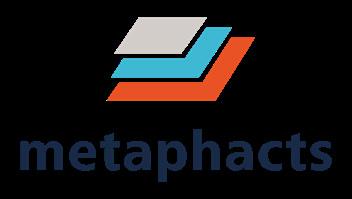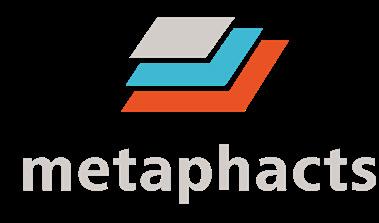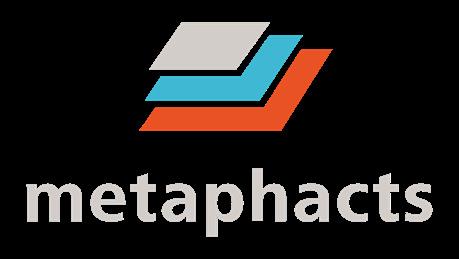Tech Talks with
Cedric Berger
DATA SOBRIETY AND SOVEREIGNTY
Seeking sustainable digital practices.


Tech Talks with CEDRIC BERGER
Head of Knowledge Extraction and Integration at Roche

Seeking sustainable digital practices.
01 02 AND SOVEREIGNTY
HISTORICAL PERSPECTIVE:
How do you view the evolution of the human brain and its impact on the development of technology? Are we seeing parallels in the way modern technology evolves?
The evolution of the human brain was guided by fundamental principles: maximize pleasure and minimize pain and energy spending. This is reflected throughout human history by the creation and use of tools designed to alleviate difficult or painful tasks including modern "cognitive tech".
Throughout human history, we observe parallels in the development, usage and societal changes cognitive tools have triggered such as the apparition of language enabling fire domestication, of writing facilitating accounting, the various graphical representations of information such as paper printing
sparking religious revolutions, and information integration such as the World Wide Web as a network of linked documents enabling business globalisation or, in its most advance form, a network of linked data supporting nowadays Artificial Intelligence (AI).
However, over the past 200 years, technological developments overly relied on the consumption of fossil energy, resulting in ecosystem pollution. This approach is not sustainable, necessitating preparation for substantial changes in our technological trajectory and energy use.
PROGRESS AND INNOVATION:
How do you define progress within the pharmaceutical industry, especially in the context of technology's exponential growth? Is there a philosophical boundary to innovation?
Progress does not only encompass advancements in technology but also science and social efficiency. Innovation specifically refers to the introduction of new ideas, methods, or products in an incremental or disruptive fashion.
The pharmaceutical industry, dating back to the mid-1800s, has experienced a different trajectory of technological innovation as compared to digital-native industries.
It is a multifaceted business spanning the secondary sector (drug manufacturing, high-throughput processes) and the tertiary sector (research, development, regulatory, and commercial divisions, along with support functions like HR, finance, and management). While the secondary sector has seen increasing
automation through mechanical robotization, artefacts flowing through tertiary activities went from paper to digital format. However, the underlying process hasn’t fundamentally changed since the 90’s. The pharmaceutical industry is not benefiting yet from the full potential digital transformation can bring.
Pharma innovation faces both general and industry-specific obstacles. General barriers include practical and material limitations, ethical considerations, epistemological constraints, and socio-cultural factors affecting adoption. Industry-specific challenges stem from the nature of the business itself: its direct impact on human health leading to a stringent regulatory environment, and some complacent conservatism born from historical profitability.
TECHNO-MESSIANISM:
The idea of "techno-messianism" suggests that technology can solve all human problems. Do you believe this mindset is relevant or potentially harmful in the pharmaceutical sector?
The concept of "techno-messianism" can be detrimental to both individuals and organizations. The tech industry capitalizes on the human brain's inherent tendency to minimize pain and efforts by inundating the market with machines and system assisting people and organizations.

However, over-reliance on poorly designed assistive technologies can downgrade human or organisational capabilities instead of augmenting them.
Let’s take a concrete example. The pharmaceutical industry, given its complex nature, employs thousands
of different IT systems, each operating its own vendor-specific internal logic. This results in the management of millions of datasets in diverse ways.
As a result, the data landscape is fragmented, disorganised, of various quality levels, and confined within the proprietary logic and databases of IT systems. This has led to the current situation where likely no single individual possesses a comprehensive, end-to-end understanding of the data landscape, hence of the business itself. The over-reliance on disparate and uncontrolled technological solutions has resulted in a loss of holistic insight.
COMPUTING POWER & PHARMA:
With the increased computing power and advancements in AI, how is the pharmaceutical industry leveraging these technologies to enhance drug discovery, development, and patient care?
The multi-faceted pharmaceutical business presents numerous opportunities for digital transformation: AI-powered drug discovery, smart adaptive clinical trials, drug manufacturing 4.0… Many of these are riding the current AI hype cycle largely built on the economy of promises. The critical factor is not the multiple potential uses of AI but how it truly adds value.
Not all pharma companies prioritise digital transformation in their business strategy. This requires a deep understanding of required resource mobilisation, disruptive consequences, and the required long-term commitment and support yielding no substantial return on
investment in the short run (see The Uncensored Data Strategy). Without a central top-down program, digital maturity often varies across departments and AI applications proliferate in a disorganised hence inefficient and risky manner.
Pharma executives often claim "digital isn't our core business”. But when did we last handle paper documents? This mindset, combined with the industry's inherent difficulties in innovation and the relentless external push of techno-messianism, makes it clear why many pharma companies are not fully realising the benefits of digital transformation.

AI & DATA QUALITY:
You mentioned that big organizations need clean data for effective AI, yet they hope AI will clean their data. How can we escape this dilemma?
It is a chicken-and-egg story and the egg (the data) came first. Everybody agrees that we need clean data, but nobody wants to either engage in a program to clean legacy data or to set the foundation to produce future clean data.
Why is that? I think human beings are geared to react to what they sense, particularly what is painful. If you don’t see or feel something, you don’t understand it hence, you don’t react accordingly. Even if reported in the news, catastrophes due to climate change happening far away from our modern urban comfortable way of
life don't incentivise us to change our habits, although we should. The same happens with unperceived data quality consequences by decision-makers until it hurts really bad (see recent fines in the bank industry lacking data governance).

For the pharmacy industry, the question is: when and what event will occur, that will be financially painful enough, to motivate decision-makers to sponsor long-term programs (triggering a cultural change) to put data quality as the strategic priority?
DIGITAL & BIOMEDICAL:
In an industry as highly regulated and complex as pharmaceuticals, how data and algorithmic advancements, including AI, support innovation and new insights generation?
Over the last three decades, technomessianism led to the proliferation of IT systems across pharmaceutical organizations. A typical big pharma operates thousands of systems, containing thousands of databases handled differently by different proprietary systems and logics. This creates a highly complex data landscape that is hardly understandable end-to-end.
If data is "the new oil," why focus primarily on the pumps and pipes (IT systems)? This complex data integration at machine level yields poor data quality at user level resulting in
inefficiencies amounting for hundreds of millions of opportunity savings or gains. The later are hard to identify and quantify precisely though without a dedicated solution to decipher the complexity of such a digital ecosystem.
Beyond primary business, poor data quality also secondary usage of data such as data science and nowadays AI. A system is as smart as the data available to it. Despite significant recent progress, Large Language Models (LLMs) don’t to reach their full potential due to the "garbage-in/ garbage-out" phenomenon. It's key to understand that there is no AI without IA - Information architecture.
Build a future-proof business with knowledge graphs
metaphactory supports collaborative knowledge modelling & knowledge generation & enables on-demand citizen access to consumable, contextual & actionable knowledge
Accelerate customers' Knowledge Graph journey & help them drive decision intelligence through knowledge democratization

future-proof with graphs
Despite significant recent progress, Large Language Models (LLMs) don’t reach their full potential due to the "garbage-in/garbage-out" phenomenon. It's key to understand that there is no AI without IA - Information architecture.
Cedric
Berger
Head
of Knowledge Extraction and Intergration at Roche


Start your knowledge graph journey today...
The pharmaceutical industry, given its complex nature, employs thousands of different IT systems, each operating its own vendorspecific internal logic. This results in the management of millions of datasets in diverse ways. As a result, the data landscape is fragmented, disorganised, of various quality levels, and confined within the proprietary logic and databases of IT systems. This has led to the current situation where likely no single individual possesses a comprehensive, end-to-end understanding of the data landscape, hence of the business itself. The over-reliance on disparate and uncontrolled technological solutions has resulted in a loss of holistic insight.


Cedric Berger Head of Knowledge Extraction and
Intergration at Roche
CRITICAL DECISIONS RELY ON HOLISTIC, CONNECTED AND CONTEXTUALIZED DATA
BUILD AN ACTIONABLE INFORMATION ARCHITECTURE TO SUPPORT INNOVATION

HEDGE AGAINST THE HIDDEN COST OF KNOWLEDGE LOSS
Connect the dots and enable a 360° view over your entire data ecosystem
Eliminate knowledge silos, significantly reduce the time and costs spent on data retrieval and get deeper insights based on high-quality data.
Evolve and adapt to a rapidly changing business environment by capitalizing on technology innovation and setting up an adaptable Information Architecture for your business.
Build a layer of trust and explainability for your LLM-driven applications.
Retain valuable expert knowledge often lost during a turn-over or employee leave, that is vital for driving growth and innovation in your organization.
Make critical domain knowledge, experience and expertise readily available for decision-making.
KNOWLEDGE GRAPHS provide an unprecedented opportunity to unlock the hidden potential of your data and internal expertise. They enrich your data with businessrelevant context, and allow for more efficient knowledge management, holistic analysis and discovery, ultimately leading to better-informed decisions and innovation and supporting your business in standing against the test of time.
metaphacts provides the product, services and expertise to help you accelerate your knowledge graph journey:
• SEMANTIC KNOWLEDGE MODELING to explicitly capture knowledge and domain expertise, create a shared understanding of your data, and shape your enterprise information architecture
•
• KNOWLEDGE MANAGEMENT, REPORTING AND DASHBOARDING to help validate and consistently govern data, and standardize and harmonize your information landscape
• KNOWLEDGE DISCOVERY INTERFACES to surface holistic insights you need to accelerate and scale knowledge-driven decision making
REGULATION VS. INNOVATION:
Given that the pharmaceutical industry is highly regulated, how do you strike a balance between meeting regulatory demands and fostering technological innovation?
When collaborating with Health Authorities (HAs), there are two fundamental principles to follow: early involvement of HAs, and proactive transparency. These principles are particularly important when implementing innovative AI-driven solutions.
In the pharmaceutical industry, innovation typically follows a slow incremental path rather than a disruptive one. For instance, traditional testing and validation processes designed for deterministic solution fall short when it comes
to stochastic AI solutions. This gap necessitates to innovate internally and externally with Health Authorities.
As with any project, AI implementation initiatives should identify risks, disclose them transparently and develop comprehensive mitigation plans. An often overlooked but critical aspect are educational programs. These are vital in ensuring users will get the maximum value out of AI, minimising risks and alleviating concerns –whether founded or not – about AI and robotics replacing human jobs.
COMPLEXITY AND PROFITABILITY:
The pharma business is both complex and profitable. How do you manage this complexity while ensuring sustainable profitability in an era of rapid technological advancements?
The drug development and commercialisation effort has steadily increased over the last decades, with costs ranging nowadays from $1 billion to $2.6 billion and timelines extending to 10-15 years. This is mostly due to stricter regulations, longer R&D cycles, and high failure rates of drug candidates.

The industry is also grappling with a decline in the quality of foundational public research, partly attributed to the "reproducibility crisis" and a dysfunctional peer-review system favouring mainstream research and driven by the business of scientific publishing. This necessitates additional efforts from pharmaceutical companies to verify and complement public research findings.
Moreover, easily targetable diseases have been addressed with the understanding of the bio- mechanistic of about 1600 proteins. Remaining unmet medical needs relies on complex, multi-factorial/protein mechanism, making traditional drug discovery methods less effective.
As mentioned earlier, a genuine digital transformation that focuses on data rather than systems could address many of these challenges. However, this transformation is not yet considered essential because the pharmaceutical industry remains profitable due to its substantial financial momentum and frequent management manoeuvres, which unfortunately add to the complexity of the human, data hence knowledge ecosystem.
IMPACT-DRIVEN INNOVATION:
You’ve mentioned that your approach is "why first, then impact." How does this philosophy shape the way you lead your teams, and how do you align it with the goals of leveraging technology for transformative impact in healthcare?

We all seek for meaning in our lives, in our work. Starting with the question “why” serves several purposes: it helps determine what we do makes sense, it supports stakeholders engagement by clarifying the context. Context is crucial because everything is defined by its relationships and interactions (as Tim Berners-Lee notes). Without context—the “why” as well as other key questions like who, where, when, and how—you cannot define or understand anything.
Everyone sees the world differently, and only through discussions based on shared contextual understanding can we agree, especially regarding the concept of added value. This is where
knowledge graphs (KGs) can help as a powerful cognitive technology to support system-thinking and scientific thinking, two key methodologies to navigate our VUCA (Volatile, Uncertain, Complex and Ambiguous) world safely and efficiently.
I don’t see myself team leader but more a team supporter. Providing context transparently and explaining the “why” and the value of what we are doing are the foundation of any collaborative endeavour, especially when it comes to digital initiative. We tried to demonstrate the advantage of such an approach in our paper about Data Governance 4.0.
https://arxiv.org/abs/2311.02082
ENTREPRENEURIAL MINDSET:
As an e nt repreneur known for "getting things done," how do you navigate the intricate dynamics of a complex industry like pharmaceuticals? What role do people and data play in your decision-making process?
As an entrepreneur, my life is not easy. I need to navigate intricate dynamics, balancing two opposite forces: the established order's conservatism and the drive for innovation and change.
My strategy focuses on identifying early adopters (Innovation diffusion theory) and exclusively collaborating with them. Engaging with the majority is futile due to their significant resistance to change. Adopting new ways of working such as data-centricity, obvious but neglected methodologies such as
scientific- and systems-thinking, and cutting-edge technologies like KGs requires curiosity, courage and high organisational skills to work the extra mile. Additionally, these new approaches are perceived as threats by individuals who benefit from the complexities of the established order.
It's really about striking the right balance between established practices and innovative approaches and applying it surgically where it adds value. This is an art more than a science and require rare profiles with a dual digital/business expertise.

Additional information www.biomedima.org
Thanks to Stephane Manara for providing valuable insights. Thanks to Gilles Hubert for taking the photos.

